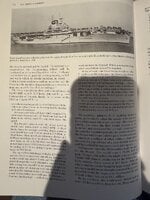When I got an opportunity to go out and visit an A School classmate who was in charge of the PLAT system on the Lex, I was excited about getting a trap and a cat shot. So I and a bunch of Pensacola instructors are all buttoned up in a stoof (US2B) to head out to the boat when #2 engine can't get its oil pressure up. So the duty SH3 fires up and trundles us out to the boat. Shoot, there goes my trap!BTW, my ship was one of the last ones to have a C-1 hack permanently assigned to the ship and while they would trap to board, all take offs were a deck run off the angle.
After watching a bunch of Dilberts scare themselves, their instructors, and the LSOs in their T28s, it's time to head back in a heavily loaded C1. I plugged into the intercom (I was in what would have been the plane captain/loadmaster seat), and heard the pilots talking about currency issues. Turns out the SIC (who was pilot flying on this trip) was two days away from being out of currency on deck run takeoffs so the skipper calls ops, cancels the scheduled cat shot and gets clearance for a deck run. Shoot, there goes my cat shot! The deck was bare, so we got clearance for full length. It was an eye opener looking down and watching the left main wheel rolling along about two feet from the deck edge and the catwalks as we taxied back to the rounddown. When we ligned up for takeoff, I swear our tail was hanging out over the ocean.
God, those 1820s are noisy! And they feel like they're shaking themselves to death. Acceleration could best be described as a waddle. If we had thirty knots going by the island, I'd be surprised. Of course I couldn't see forward but it looked like we got airborne in the last 100 feet of deck. Quite an experience for someone in the jet fighter world.
Cheers,
Wes

